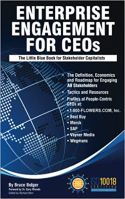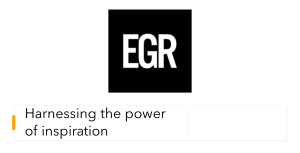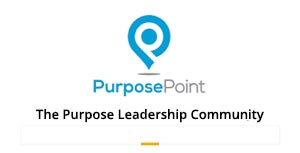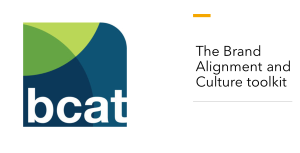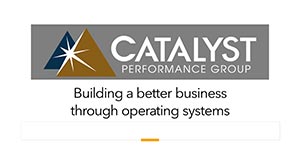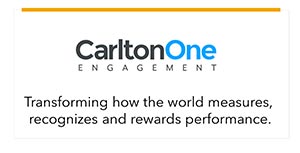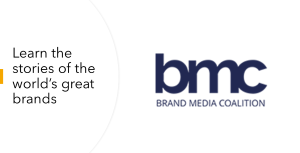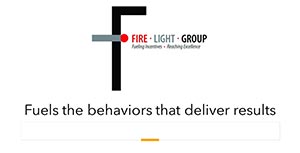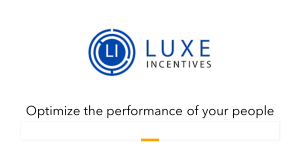Resource Library
Leadership
The Incentive Research Foundation funds and promotes research to advance the science, enhance the awareness and appropriate application of motivation and incentives in business and industry globally. The goal is to increase the understanding, effective use and resultant benefits of incentives to businesses that currently use incentives and others interested in improved performance... [ read more ]
A summary of research by the ISPI (International Society of Performance Improvement) on the impact of incentive programs and the essential implementation steps necessary for success. Shows how helpful incentive and motivation programs can be in terms of engaging employees and improving performance.... [ read more ]
This white paper delves into the mechanics of sales incentive programs, providing managers with useful information to design successful sales initiatives at their own companies and providing their corporate decision makers with hard evidence.... [ read more ]
Results from the study Awards Selection: Insights from Managers, conducted by the Forum for People Performance Management and Measurement, sheds light on the efficacy of 12 distinct motivational tactics used by HR and marketing managers across many industries to achieve 10 specific organizational objectives.... [ read more ]
Meeting Professionals International (MPI) the world's largest association of meeting planners, and meeting-industry suppliers, makes articles, books, and other research materials available through the MPI Resource Center. The resource center serves as a clearinghouse of information related to the meetings industry, and for a fee, depending on the nature of the research. MPI can offer information and articles on meeting planning companies, or rent lists of MPI members who provide professional meeting planning services. MPI publishes a monthly magazine, The Meeting Professional. MPI's publishing lineup also includes an annual membership directory that capsulizes late-breaking industry news. MPI has five special-interest groups, including one dedicated to sales and marketing. MPI maintains a "special interest group" for independent meeting planning companies. This group is currently the organization's fastest growing membership segment. MPI also publishes a monthly magazine, The Meeting Manager, which members receive free. MPI operates an online communications system, MPINet through CompuServe, which, as a networking and information resource for meeting planners and suppliers, allows meeting professionals to communicate with each other in a "private forum.” ... [ read more ]
A study on employee motivation and performance in the hospitality industry that looks at strategies for reducing employee turnover. ... [ read more ]
Federal legislators in 2002 enacted the Sarbanes-Oxley Act (SOX), which was designed to improve the accountability of corporate managers to shareholders and to improve public confidence in publicly traded companies. This white paper is an outline of the potential impact of SOX on the use of performance improvement and incentive programs. ... [ read more ]
Published: Aug 14, 2013

If recognition is thoroughly woven into the fabric of your culture, it becomes a true measurement tool of individual and organizational performance... [ read more ]
Published: Nov 15, 2017

The 10018 Guidelines on People Involvement and Competence were created by the ISO (International Organization for Standardization) Technical Committee ISO/TC 176, Quality management and quality assurance, Subcommittee SC 3, Supporting technologies. These standards are based on ... [ read more ]
To assure the program’s success, Dow developed a comprehensive communications plan to
raise awareness of Recognition@Dow, increase participation, boost performance, and most
importantly, help to build an appreciation culture. The majority of the launch activities focused on
generating content and communicating program messages through existing communications
channels such as the Dow Intranet, corporate newsletter and HR website. In addition, training
workshops were developed for leaders (managers) to generate program awareness and
encourage participation
... [ read more ]
Presents an overview of the essential elements involved with performance improvement strategies. Breaking new ground, "people performance management" takes familiar disciplines and integrates them across functional lines to maximize results.... [ read more ]
Founded in 1973, SITE is the only international, not-for-profit, professional association devoted to the pursuit of excellence in incentives, a multi-billion dollar global industry. Society of Incentive & Travel Executives (SITE) provides educational seminars and information services to those who design, develop, promote, sell, administer, and operate motivational programs as an incentive to increase productivity in business. Currently SITE has over 2,100 members in 87 countries, with 35 local and regional chapters. Members represent corporate executives, incentive companies, destination management companies, travel & event planners, official tourist organizations, transportation companies, hotels and resorts, cruise lines, trade publications, and supporting organizations such as restaurants and visitors attractions. ... [ read more ]
While it is widely believed that employee attitudes and engagement directly influence customer experiences and customer spending behavior, there is little empirical evidence that has explicitly demonstrated this. This study, subtitled "An Empirical Analysis of the Relationship between Employee Attitudes, Customer Attitudes, and Customer Spending," combines results from an extensive survey of employees and customers at a hotel chain with the actual spending patterns of customers. Results show a direct, measurable relationship between the employee and customer perceptions of the hotel brand and customer spending behavior. ... [ read more ]
This paper introduces the discipline of "People Performance Management" as developed by the Forum for People Performance Management and Measurement, a unit of the Integrated Marketing Communications Department of the Medill School of Journalism at Northwestern University. People Performance Management refers to an integrated process designed to help firms maximize long-term financial performance through a strategic focus on their most valuable asset -- human capital.... [ read more ]
The Conference Board is the world's preeminent business membership and research organization. Best known for the Consumer Confidence Index and the Leading Economic Indicators, The Conference Board has, for over 90 years, equipped the world's leading corporations with practical knowledge through issues-oriented research and senior executive peer-to-peer meetings.... [ read more ]
The cost of employee disengagement to U.S. companies in terms of lost productivity, accidents, theft, and turnover is estimated to be as much as $350 billion per year. Disengaged workers are often absent (even when they are at work), disconnected, and often pessimistic about change and new ideas. They have high rates of absenteeism and tend to negatively influence those around them. Engaged workers, on the other hand, are significantly more productive, interact more positively with other employees and new hires, and are much more likely when they interact with customers to create relationships that generate loyalty and increased business. This white paper looks at the best measures available for building engagement among employees along with looking at the ROI for investing in those measures as a way for managers to demonstrate the economics of engagement to top executives.... [ read more ]
In today's economic environment, employers are struggling to find every advantage possible to thrive, grow or simply to stay in business. For most US based organizations payroll represents the largest expense. Advantages therefore, come first and foremost through better talent management.... [ read more ]
Most leaders and organizations know the difference between a fully engaged worker and one that is marginally engaged or disengaged. The former brim with enthusiasm, they contribute ideas, are optimistic about the company and its future, are seldom absent from work, they typically stay with the organization longer and are among the organization’s most valuable ambassadors. Disengaged workers, on the other hand, are often absent (even when they are at work). They are disconnected and often pessimistic about change and new ideas. They have high rates of absenteeism and tend to negatively influence those around them, including potential customers and new hires. And the cost of disengagement to U.S. employers is estimated to be as much as $350 billion per year.... [ read more ]
Improving economic conditions, an impending skilled labor shortage, and the proven link between low turnover and profitability are forcing organizations to take a new look at employee retention. This paper suggests that sound retention strategies can not only head off a future problem, they can save money and improve sales today.... [ read more ]
To be successful in the evolving world marketplace, and even in their own workplace, leaders and managers must begin to understand their constituents’ state of mind, says Gallup’s chairman and CEO Jim Clifton, in this summary of recent Gallup research. Human decision making is more emotional than rational, the research suggests, and “State of mind is everything that matters to leadership: talent, innovation, entrepreneurship, creativity, optimism, determination, and all of the other things that create economic growth,” Clifton says. Successful leaders, he adds, will be those who can quantify those states of mind to better understand the emotions that cause behavior. “If you are making decisions without understanding what your constituency is thinking, you are making bad decisions,” he says. ... [ read more ]
This study, a follow up by Prof. James Oakley, identified key internal levers that affect employee satisfaction and, more importantly, the level of engagement.... [ read more ]
For last year’s Summit, a research study was conducted to assess the drivers of employee satisfaction and engagement and the downstream customer and financial implications of these important employee attitudes. This research identified several unique organizational characteristics driving employee engagement, including employee satisfaction, and identified organizational communication as a key driver of employee satisfaction.... [ read more ]
Published: May 28, 2019

Despite hundreds of billions of dollars spent annually by organizations to engage employees and customers, numerous independent research studies find that neither employee nor customer engagement have improved appreciably in more than a decade. ... [ read more ]
Published: Jan 18, 2021

Conceived in the 1990s, the concept of Total Rewards represented a revolution in thinking related to compensation that to this day has not been fulfilled at many organizations, that is: a strategic, holistic approach to compensation that considers every aspect of the employee experience and his or her capabilities and potential contributions to the organization. ... [ read more ]
Loyalty Programs
Published: Jun 15, 2023

This "model" human capital report condenses the longer profile of the "ideal" practitioner of Stakeholder Capitalism - a fabricated organization known as IMC, an integrated communications company. See ESM: -"The Perfect Company: Anatomy of an Ideal Practitioner of Stakeholder Capitalism." This model was created to help organizations of all sizes visualize the format and contents of a human capital report based on ISO 30414 Human Capital reporting standards for employees and ISO 10018 People Engagement standards for customers, channel and supply chain partners, and communities. ... [ read more ]
Showing Results 776 - 800 of 1154









